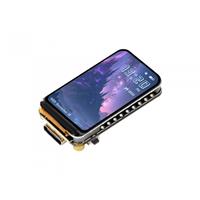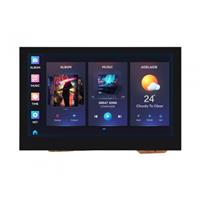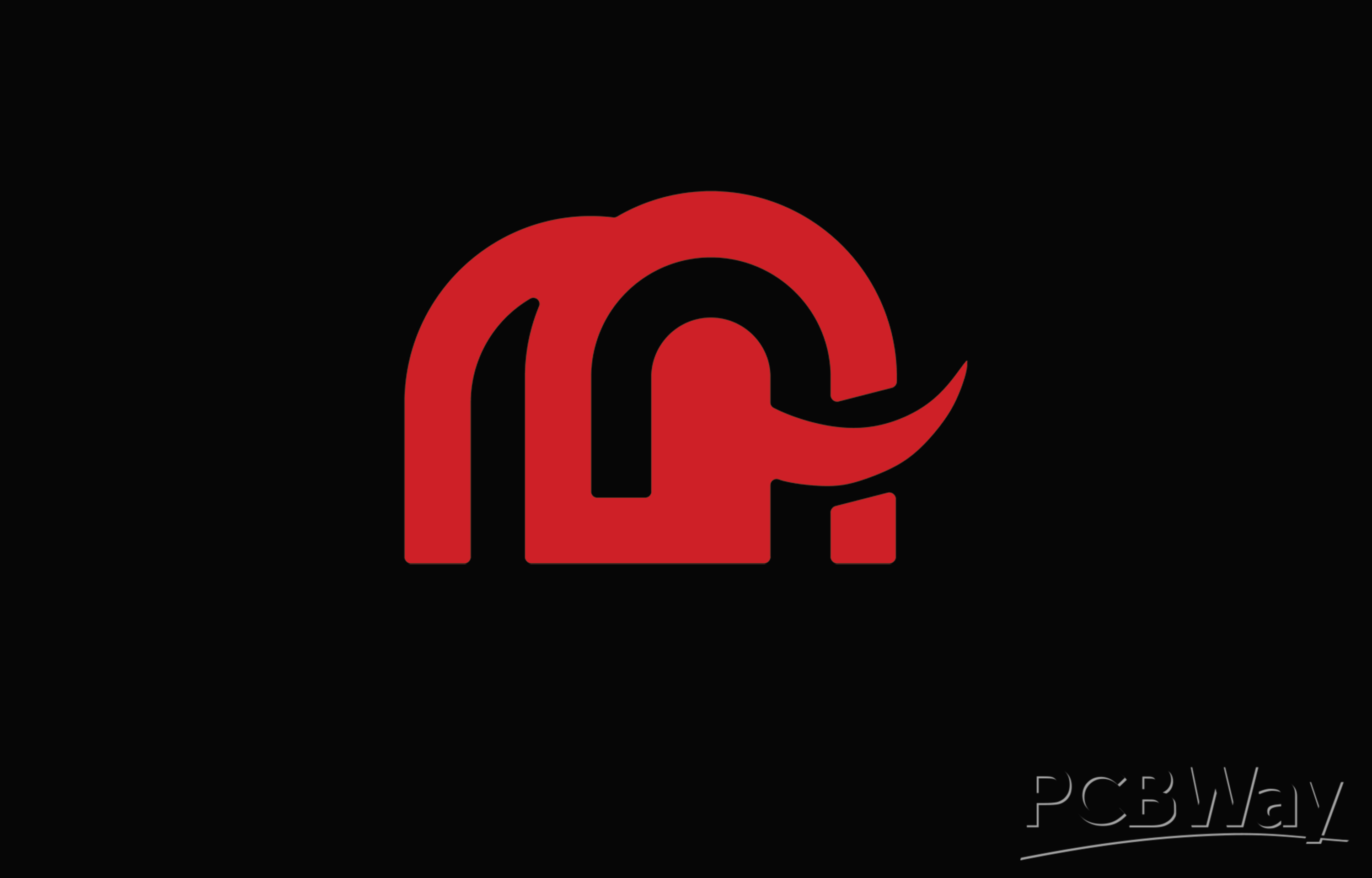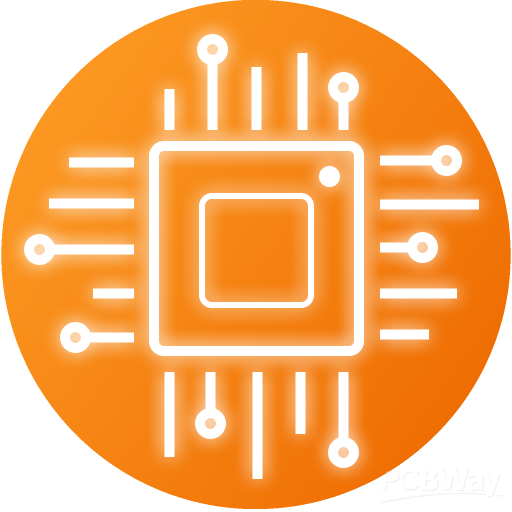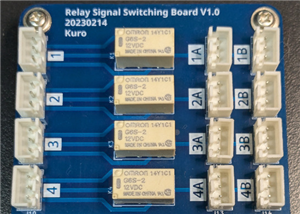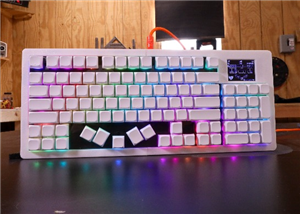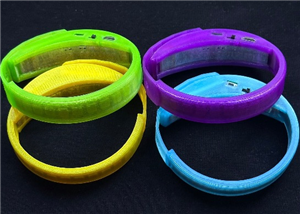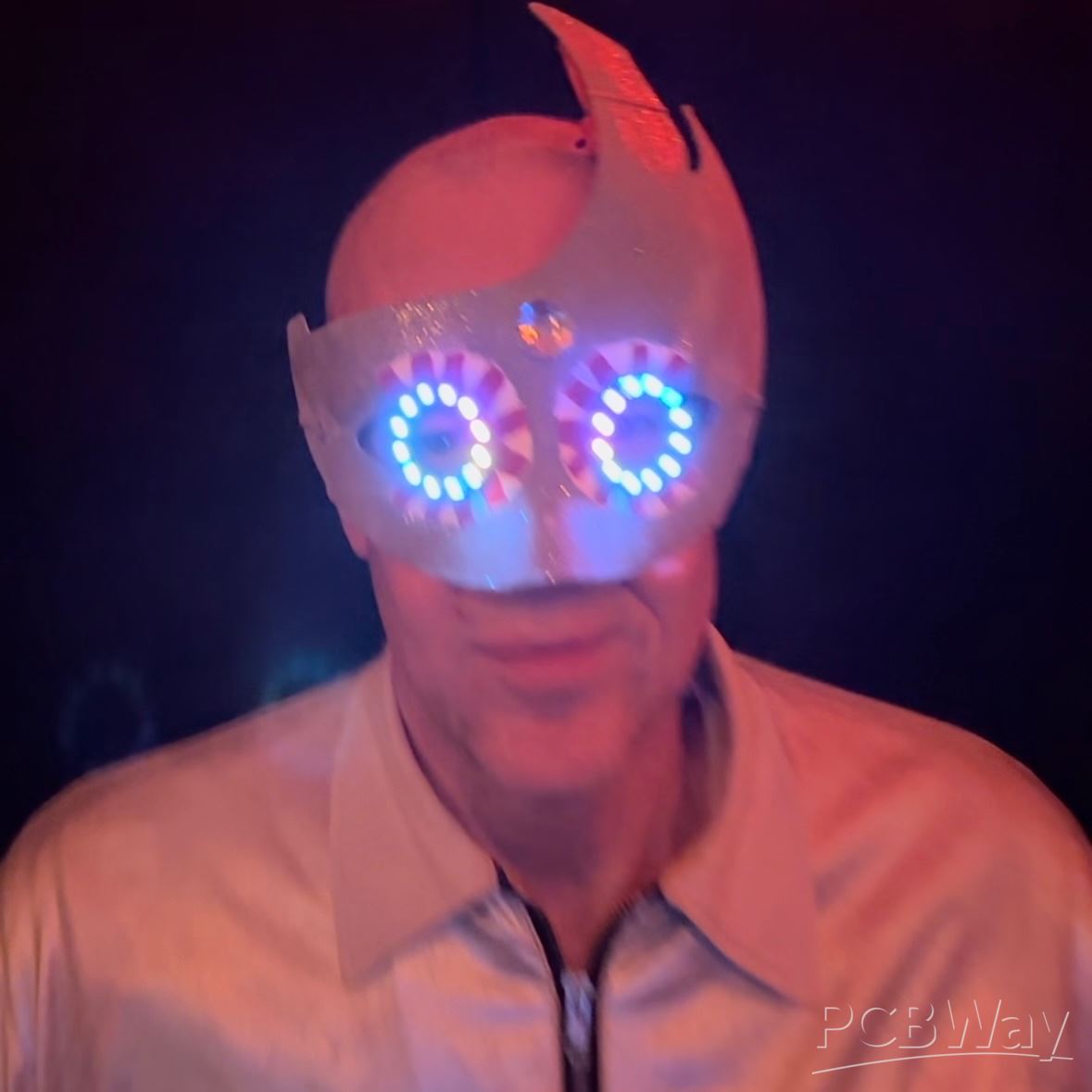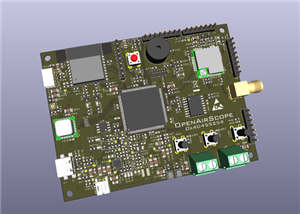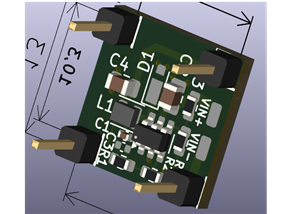Franzininho DIY
The Franzininho DIY is a DIY board developed in 2017 to encourage people to assemble their own Arduino boards and have the first contact with electronics. The board is based on Arduino Gemma and Digispark hardware and can be programmed in the Arduino IDE after assembled.
Hardware
Based on the ATtiny85 microcontroller, the Franininho DIY has simple hardware designed in a way that allows people to assemble and even make their own boards at home.
The following is the Franzininho DIY circuit:

As shown in the schematic above the Franzininho DIY has lean hardware. To facilitate the hand made production, the board was developed in the single face layout and the components are all PTHs.
The following is the PCB layout of the current version:

The first version of the board was made with the USB connector drawn on the board. But due some fabrication problems, I decided to change for a PTH USB connector.

The following is the 3D model of the current version:

The board has two LEDs, one to indicate power (ON) and one for general use, connected to the PB1 pin of the ATtiny85 (this LED that is generally used for the blink).
There is also a RESET button to make it easier to enter in bootloader mode.
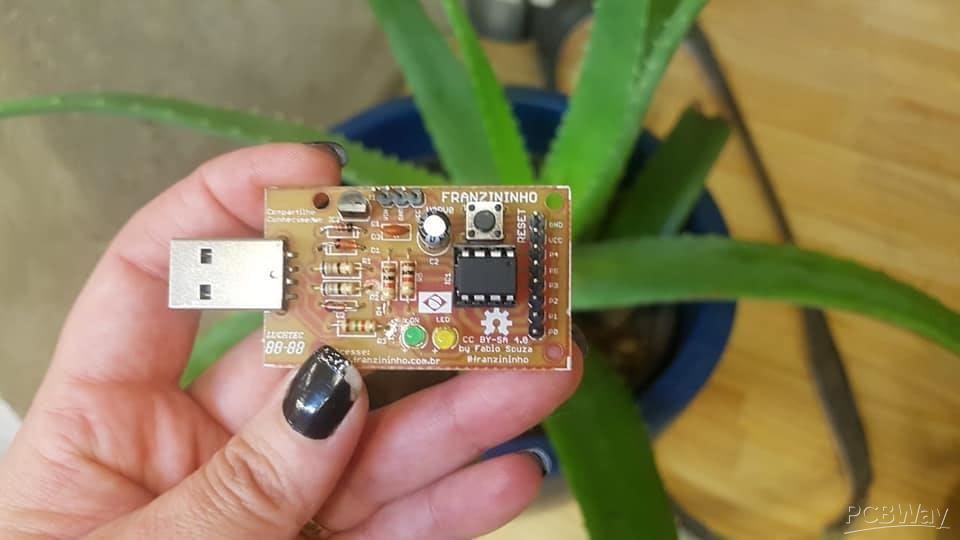
Pinout
All ATtiny85 pins are available in the I/ s header. The following figure shows the pins and table, their respective functions:

Several Franzininho DIY have already been assembled in Brazil, impacting thousands of people. We encourage people to build their own projects and share with others:







The project was published in CC-BY-SA 4.0 license and is available on GitHub for anyone making their own.
We have extensive documentation (only in Portuguese) available and done in a collaborative way by the community.
Franzininho DIY
*PCBWay community is a sharing platform. We are not responsible for any design issues and parameter issues (board thickness, surface finish, etc.) you choose.
- Comments(10)
- Likes(13)
-
 Anthony Pedotto
Feb 22,2025
Anthony Pedotto
Feb 22,2025
-
 Marcelo
Aug 13,2023
Marcelo
Aug 13,2023
-
 Engineer
Feb 23,2022
Engineer
Feb 23,2022
-
 Engineer
Feb 17,2022
Engineer
Feb 17,2022
-
 Jack Cookson
Aug 01,2021
Jack Cookson
Aug 01,2021
-
 Engineer
May 07,2020
Engineer
May 07,2020
-
 José Miguel Gasco Saldana
Aug 20,2019
José Miguel Gasco Saldana
Aug 20,2019
-
 Engineer
Jun 30,2019
Engineer
Jun 30,2019
-
 Engineer
Jun 30,2019
Engineer
Jun 30,2019
-
 ATMakers
Jun 21,2019
ATMakers
Jun 21,2019
-
 Ohmify
Jun 20,2019
Ohmify
Jun 20,2019
-
 fabiosouza.io
Jun 20,2019
fabiosouza.io
Jun 20,2019
-
 Rachman Lusana
Jun 17,2019
Rachman Lusana
Jun 17,2019
- 19 USER VOTES
- YOUR VOTE 0.00 0.00
- 1
- 2
- 3
- 4
- 5
- 6
- 7
- 8
- 9
- 10
- 1
- 2
- 3
- 4
- 5
- 6
- 7
- 8
- 9
- 10
- 1
- 2
- 3
- 4
- 5
- 6
- 7
- 8
- 9
- 10
- 1
- 2
- 3
- 4
- 5
- 6
- 7
- 8
- 9
- 10
-
1design
-
2usability
-
3creativity
-
1content

-
5design
-
6usability
-
6creativity
-
4content

-
8design
-
9usability
-
8creativity
-
10content

-
8design
-
9usability
-
9creativity
-
10content
-
10design
-
10usability
-
10creativity
-
10content

-
8design
-
9usability
-
7creativity
-
8content
-
10design
-
10usability
-
10creativity
-
10content

-
8design
-
8usability
-
8creativity
-
10content
-
9design
-
7usability
-
6creativity
-
6content
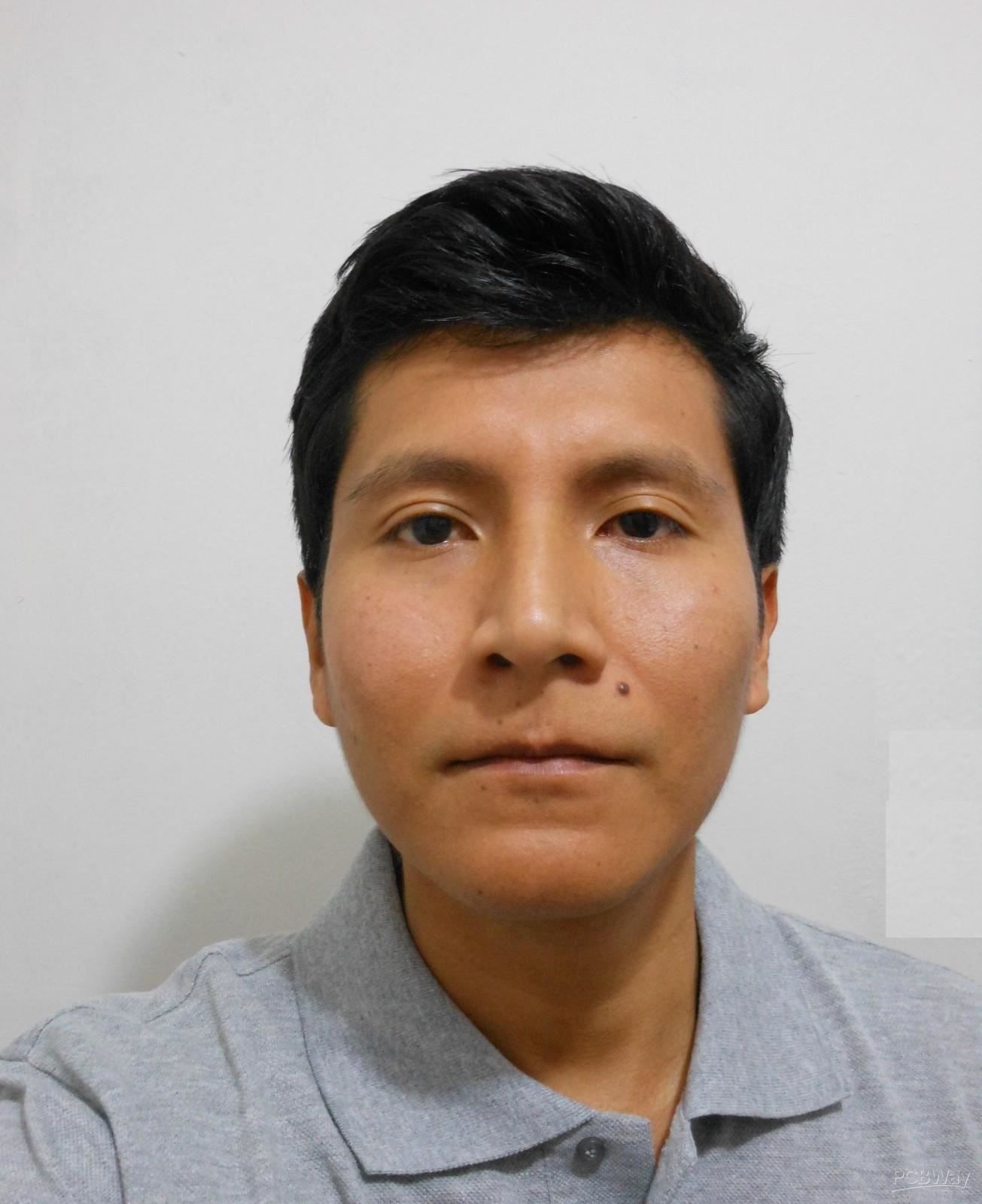
-
7design
-
8usability
-
7creativity
-
7content

-
10design
-
10usability
-
6creativity
-
10content

-
7design
-
5usability
-
5creativity
-
7content

-
8design
-
10usability
-
7creativity
-
9content
-
10design
-
10usability
-
10creativity
-
10content
-
3design
-
3usability
-
4creativity
-
5content

-
4design
-
6usability
-
3creativity
-
4content
-
8design
-
9usability
-
10creativity
-
10content
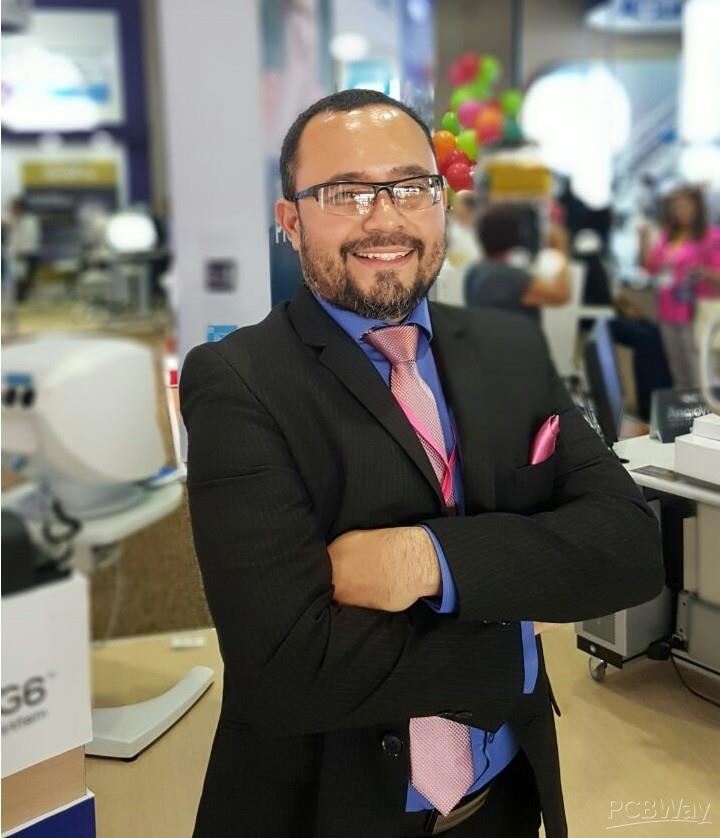
-
10design
-
10usability
-
9creativity
-
10content
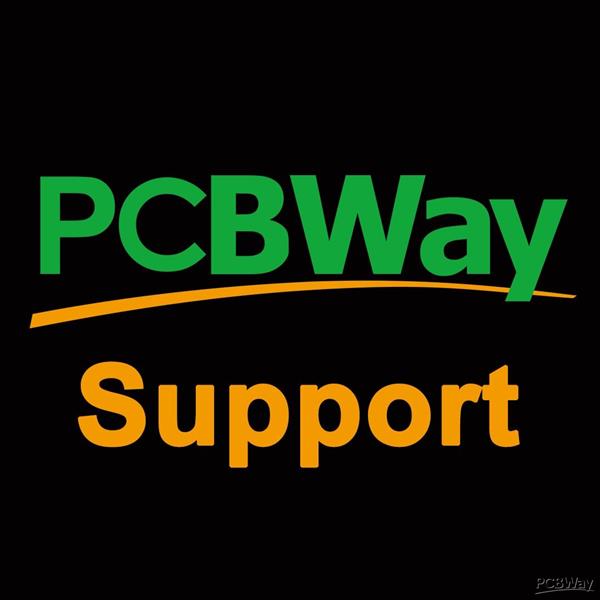
-
10design
-
10usability
-
10creativity
-
10content
 More by fabiosouza.io
More by fabiosouza.io
-
-
mammoth-3D SLM Voron Toolhead – Manual Drill & Tap Edition
189 0 0 -
-
AEL-2011 Power Supply Module
715 0 2 -
AEL-2011 50W Power Amplifier
599 0 2 -
-
-
Custom Mechanical Keyboard
799 0 0 -
Tester for Touch Screen Digitizer without using microcontroller
422 2 2 -
Audio reactive glow LED wristband/bracelet with NFC / RFID-Tags
384 0 1 -
-
























